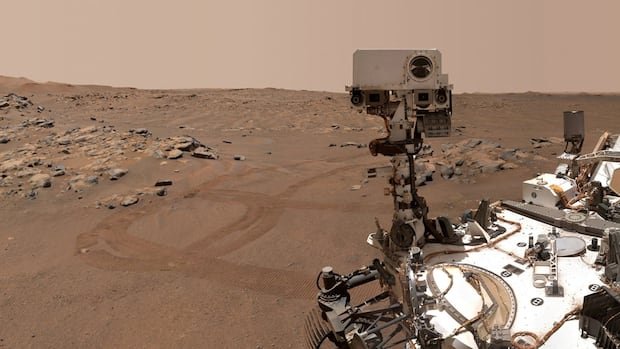NASA’s Perseverance rover has retrieved a sample of rock dating back billions of years from sediment at the bottom of a Martian lake, showing potential indications of ancient microbial life on Mars. The findings, outlined in a recent study, offer significant evidence supporting the theory that life may have existed on the Red Planet.
Since its touchdown on Mars in 2021, the rover has been exploring Jezero Crater, a region in the planet’s northern hemisphere that once housed an ancient lake. By collecting rock samples and analyzing them with onboard instruments, Perseverance aims to uncover traces of past life on Mars.
The latest sample, named the Sapphire Canyon sample, was collected from the Bright Angel rock formation, consisting of fine-grained mudstones and coarse-grained conglomerates. Joel Hurowitz, a planetary scientist from Stony Brook University who spearheaded the study, identified a potential biosignature in the ancient sedimentary rocks.
Two minerals, vivianite and greigite, were observed in the sample, believed to have formed from chemical interactions between the mud and organic matter in the Bright Angel formation. These reactions, similar to those driven by microbes on Earth, occurred shortly after the mud settled at the lake bottom.
Despite the promising findings, Hurowitz emphasized the need for caution, noting that non-biological processes could potentially mimic these reactions. Mars, once potentially habitable, had water bodies like the ancient lake in Jezero Crater over 3.5 billion years ago, raising the possibility of past microbial life.
The Sapphire Canyon sample, collected in July 2024 near Neretva Vallis, an ancient river valley leading into Jezero Crater, provides a valuable specimen for further research into potential biosignatures. Hurowitz highlighted the importance of future investigations in determining whether these features were truly shaped by ancient Martian life or if natural processes have simulated biological activity.

